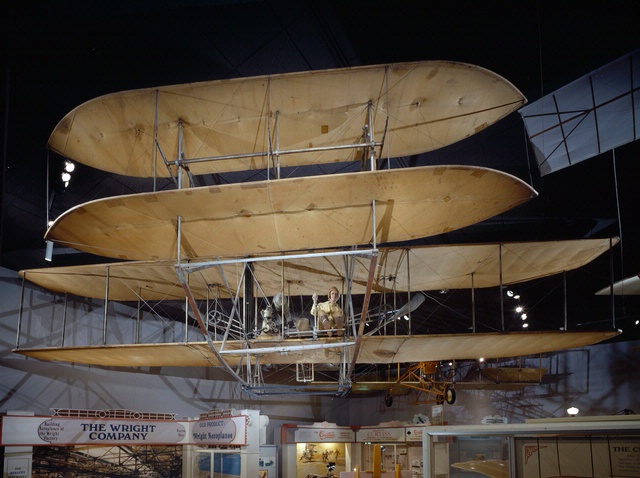
1909 Wright Military Flyer
The 1909 Wright Military Flyer was the World's first military airplane. In 1908, the U.S. Army Signal Corps ordered a two-seat observation aircraft-- one that was relatively simple to operate, could reach a speed of at least 40 miles (64 kilometers) per hour in still air, and could remain in the air for at least one hour without landing.
The Army also required that the aircraft should be easy to assemble and disassemble and be able to land safely and take off quickly. By May 1909, Orville Wright successfully met the Signal Corps's specifications with this airplane, and the military gained its wings. In 1911, the War Department of US presented Wright Military Flyer to the Smithsonian Institution.
From the beginning of their aeronautical work the Wright Brothers focused developing a reliable method of pilot control as the key to cracking "the flying problem". W
right Brothers' fundamental breakthrough was their invention of three-axis control i.e; yaw (nose movement up and down), Pitch (nose movement left and right) and Roll (sideways wings movement left and right), which enabled the pilot to steer the aircraft effectively and to maintain its equilibrium.
This method became standard and till date, remains standard on all types of fixed-wing aircraft including the Space Shuttle.
V S Saxena
saxenavs@gmail.com
Excellent article. It looks intuitive in hindsight that a 3 dimensional problem should have a 3-axis control, but it must have been breakthrough thinking at that time! Thanks for this small but very interesting post.
ReplyDeleteBefore fabricating this aircraft, Wilbur and Oliver had difference on whether the pitch control should be at the front or at the rear of the flying machine. Since both had strong views, they consulted their father. Being a Bicycle mechanic, his views were limited to Bicycle. H opined that like any other vehicle, the control should be in the front. Later models proved that rear controls for pushing the nose up or down were better achieved from rear control surfaces.
DeleteThank you very much Mudit.
ReplyDelete